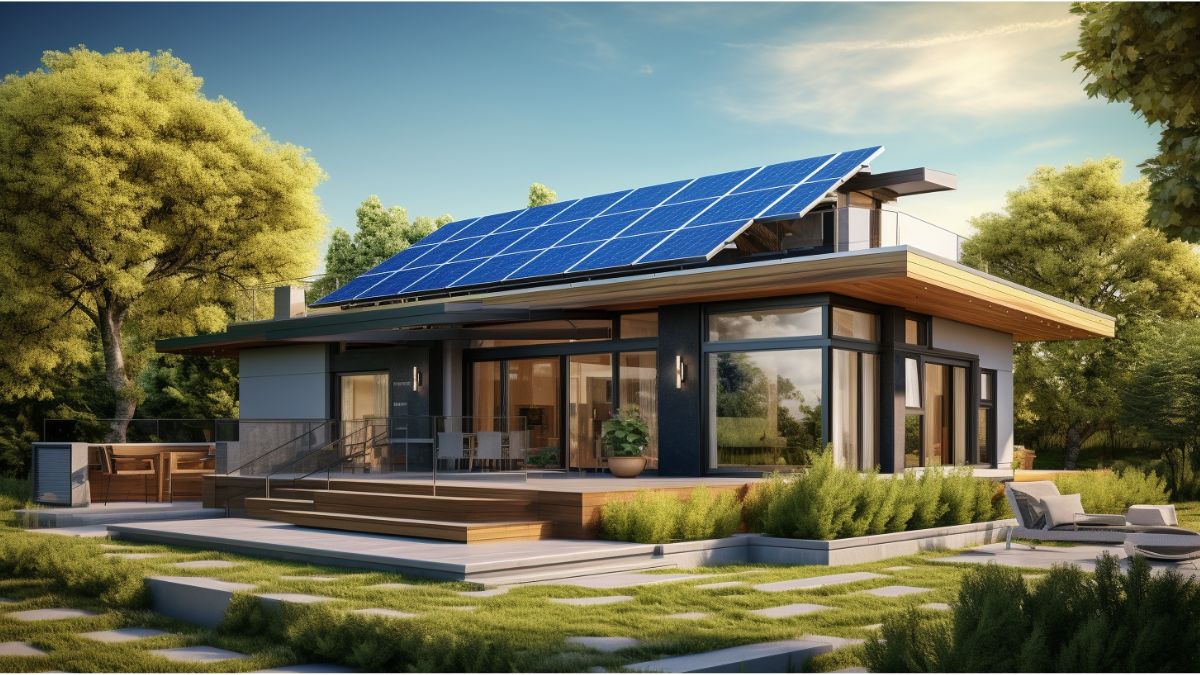Are you tired of high electricity bills and want to take control of your energy costs? Well, look no further because going solar is the solution you’ve been waiting for. With solar panels, you can cut your energy expenses and save money in the long run. Not only that, but you’ll also be reducing your carbon footprint and contributing to a cleaner, greener planet. So why wait? Discover the simplicity of going solar and start enjoying the benefits and savings today.
Key Takeaways
- Going solar can save an average of $100 per month on electricity bills.
- You can achieve the return on investment within 5-7 years.
- There are financing options available for solar panel installation.
- Solar panel tax credits can help reduce tax liability.
The Economics of Going Solar: Savings and Benefits
You can save an average of $100 per month on your electricity bills by going solar, leading to a return on investment within 5-7 years. Solar panel financing, solar panel tax credits, and solar panel lease options are available to make the transition more affordable.
Solar panel financing allows you to spread out the cost of installation over time, making it easier to manage your budget. Additionally, solar panel tax credits can provide significant savings by reducing your tax liability. If you prefer not to purchase solar panels outright, lease options allow you to enjoy the benefits of solar power without the upfront costs.
The Environmental Impact of Solar Power
Installing solar panels helps reduce your carbon footprint and greenhouse gas emissions, while also minimizing air and water pollution. By harnessing the power of the sun, you can make a positive impact on the environment.
Solar power effects are significant, as it decreases our reliance on fossil fuels and conserves natural resources. By choosing renewable energy, you are taking a proactive step in combating climate change.
Additionally, solar panels offer a host of benefits, including reducing your electricity bills. On average, solar panel owners save around $100 per month on their electricity bills. With a return on investment within 5-7 years and a lifespan of 25-30 years, solar panels require minimal maintenance and operating costs.
Going solar not only benefits your pocket but also helps create a greener and more sustainable future.
Solar Panel Installation Process
The step-by-step guide to the solar panel installation process begins with an initial assessment of your property’s solar potential. This assessment will help determine if your property is suitable for solar panel installation and how much energy you can potentially generate.
Once the assessment is done, the next step is to design and engineer the solar system specifically for your property. This includes determining the number of solar panels needed and their optimal placement.
After the design phase, permits and approvals must be obtained from the relevant authorities. Once all the necessary approvals are in place, the installation process begins. This involves the actual mounting of the solar panels on your property and connecting them to the electrical grid.
How to Choose Your Solar Panel Installer
When choosing a solar panel installer, it’s important to research and compare multiple installers to find the best fit for your needs. Start by checking the installer’s credentials, certifications, and experience. Look for installers who are certified by reputable organizations such as the North American Board of Certified Energy Practitioners (NABCEP).
Reading customer reviews and testimonials can also help you gauge the quality of their work and customer satisfaction. Additionally, ensure that the installer offers warranties for their solar panels. A good warranty can provide peace of mind and protect your investment.
Net Metering and Its Monetary Advantages
To fully understand the monetary advantages of net metering, you should familiarize yourself with how it allows you to earn money through the excess energy your solar panels produce.
Net metering is a billing arrangement that allows you to sell the surplus electricity generated by your solar panels back to the grid. This means that when your panels produce more electricity than you need, it is automatically sent to the grid and you receive credits for it on your electricity bill.
These credits can then be used to offset the cost of electricity when your panels are not producing enough. By understanding net metering and maximizing solar savings, you can navigate the various solar incentives available and make the most of your investment in solar energy.
Conclusion
Congratulations! You’ve reached the end of this informative article on solar savings.
By going solar, you can cut costs while making a positive impact on the environment. It’s ironic how something as simple as harnessing sunlight can lead to significant financial savings and reduce your carbon footprint.
Remember, the installation process may seem technical, but with the right installer, it becomes a breeze.
So, don’t wait any longer, take the leap, and start enjoying the benefits of solar power. It’s a bright decision that will illuminate your future!




